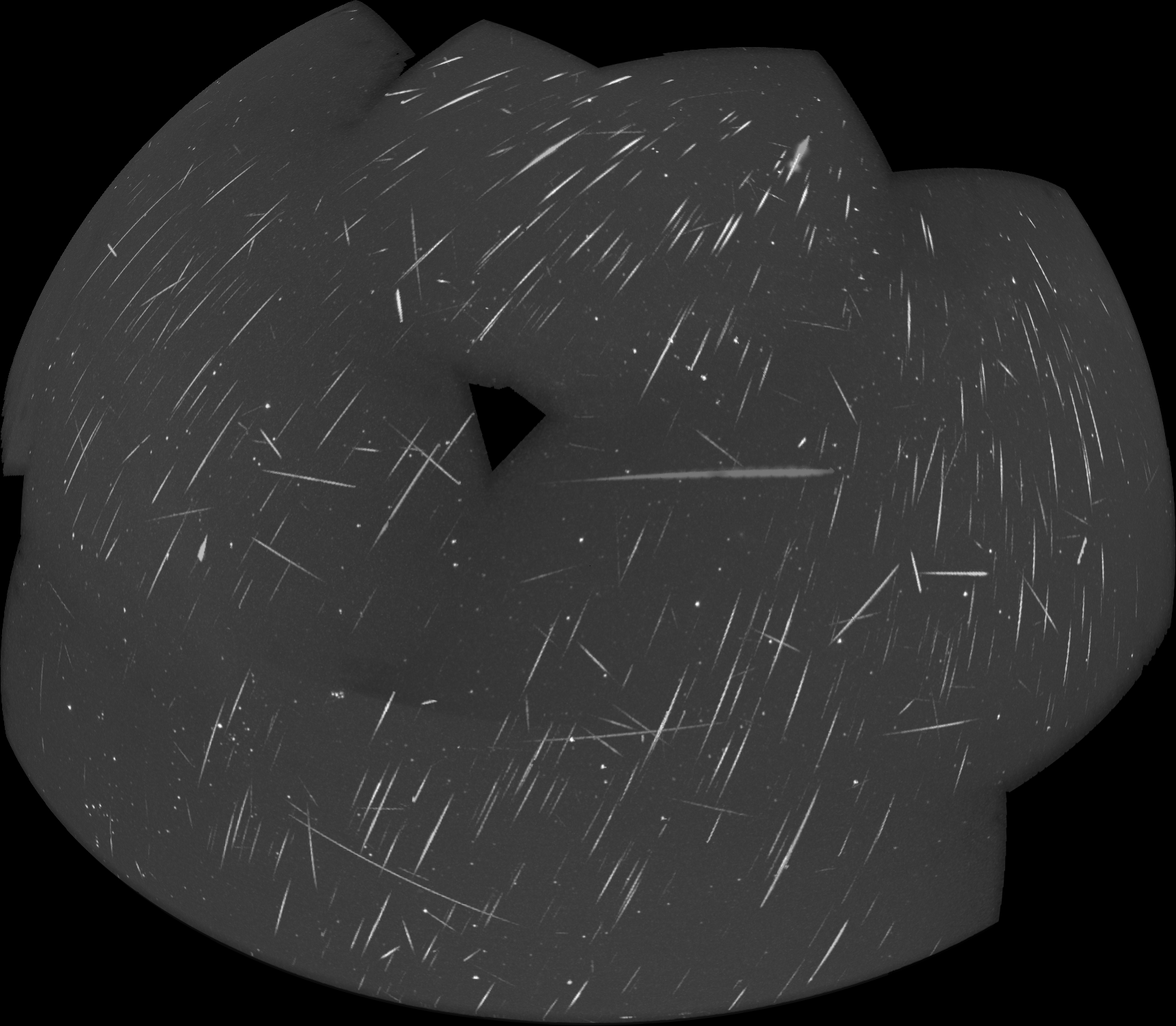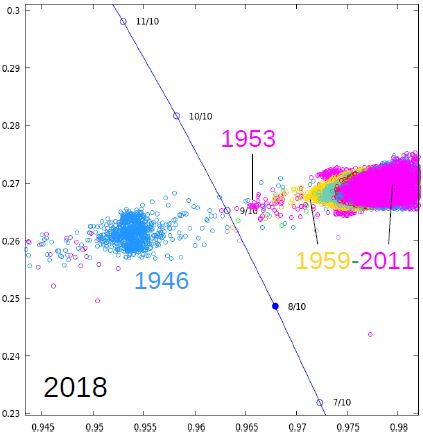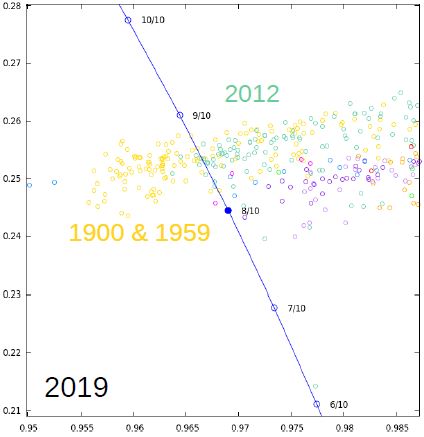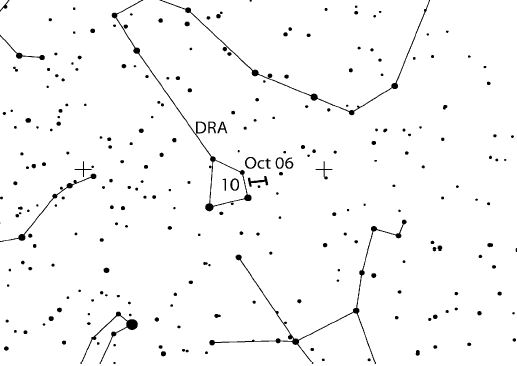Draconids are famous for their huge meteor storms, especially in 1933 and 1946. Other years, this meteor shower is quite quiet, except when a small meteor outburst or an activity enhancement occurs, as it was the case in 1985 (ZHR ~ 200-300), 1998 (ZHR ~ 720), 2005 (radio recorded), 2011 (ZHR ~ 260) and then later, as it was not expected, in 2012 (ZHR ~ 200-300) and last year (ZHR ~ 150, Figure 1). This year, nothing exceptional was expected, but new modellization seems to indicate there may be a small outburst or enhancement of Draconid activity on October 8th.

Improved models for Draconid activity predictions
Those two last outbursts, which were not clearly aniticpated, leads researchers to further analyse the meteoroid streams, and improve models to manage to simulate those events. That was especially the case of Auriane Egal’s team, who managed to model the 2018 outburst, and realized at the same that the Earth or the meteoroid stream had been further inside or outside their actual orbits, and we would have observed a huge storm (Figure 2)! Using this same method for 2019, the model predicts potential activity enhancement of the Draconids (Figure 3).


What to expect in 2019?
However, some uncertainties remains regarding trail position and density. But Egal et al. (2019) predicts the Earth may encounter 1966 and 1959 dust trails ont October 8th, at 12h 01min UT and 13h 42min UT, respectively. Other smaller trails may also induce enhancements at 12h 00min UT and 14h 35min UT. Those results were further confirmed by Jérémie Vaubaillon (outburst on Oct.7 at 11h 01min UT and on Oct. 8 at 14h 41min UT), Mikhail Maslov (1959 dust trail on Oct 8, 14h 40min UT), MSFC model (outburst on Oct 8 at 04h 20min UT and 15h 06min UT) and Ye et al. (2014) (1979 dust trail on Oct 8, 02h 00min UT).

Whatever happens, it will be of high interest to have a close monitoring of Draconid meteor shower in 2019, even if the waxing gibbous Moon will be in the sky at this period. Draconid radiant is located close to the head of Draco constellation, and is thus circumpolar for many Northern observing sites (Figure 4). It’s located higher in the sky at the beginning of the night, but in 2019, it will be interesting to observe as much as possible the Draconids activity, even if radiant is low, in case anything happens. Be well aware of Moon position, radiant elevation, and time of potential outbursts when you wish to plan some observing sessions!
Finger crossed, and clear skies to all!




 You saw something bright and fast? Like a huge shooting star? Report it: it may be a fireball.
You saw something bright and fast? Like a huge shooting star? Report it: it may be a fireball.  You counted meteors last night? Share your results with us!
You counted meteors last night? Share your results with us!  You took a photo of a meteor or fireball? You have a screenshot of your cam? Share it with us!
You took a photo of a meteor or fireball? You have a screenshot of your cam? Share it with us!  You caught a meteor or fireball on video? Share your video with us!
You caught a meteor or fireball on video? Share your video with us!